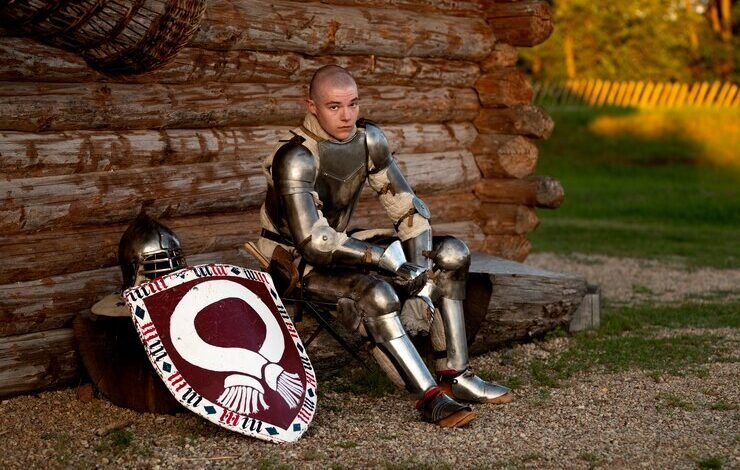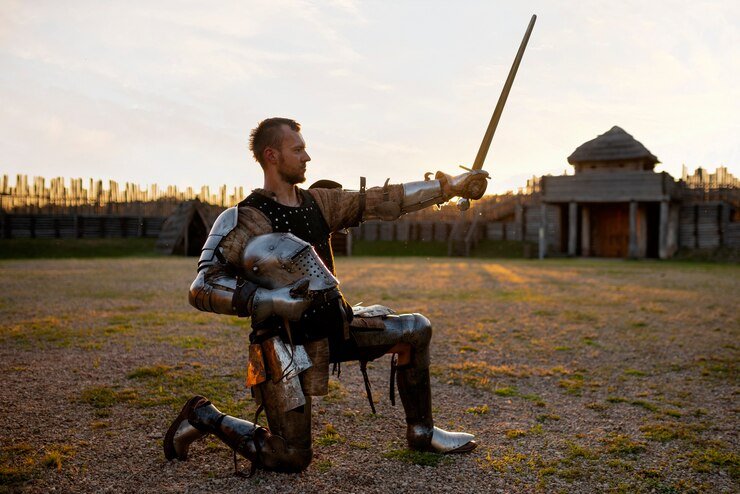Bavarian cavalry officers degen crown xv

The Bavarian cavalry officer’s degen, especially from the era of Crown XV, holds a unique place in European military history. It is not just a weapon but a symbol of aristocratic pride, military prowess, and Bavarian cultural heritage. Throughout the centuries, military swords and degens (a German word referring to a type of straight sword) have evolved in both design and purpose. Yet, few are as iconic as the degen wielded by Bavarian cavalry officers under the reign of King Ludwig III, whose Crown XV period is remembered for its distinctive military aesthetics.
In this article, we will explore the history, design, symbolism, and impact of the Bavarian cavalry officer’s degen during the Crown XV period, along with its cultural significance in Bavaria’s military history.
1. Historical Context of the Bavarian Cavalry Officer’s Degen
The degen became prominent in Bavaria during the 19th and early 20th centuries when military officers were expected to possess not only military acumen but also an unmistakable air of nobility. During the reign of King Ludwig III (1845–1921), particularly during the period known as Crown XV, the degen became a symbol of the officer class in the Bavarian cavalry.
At the heart of Bavaria’s identity was its cavalry, the pride of the region’s military might. Officers who served in the cavalry were not just soldiers; they were often members of the aristocracy or the upper classes, trained in both battle and courtly matters. The degen they carried Bavarian cavalry officers degen crown xv reflected this duality – an emblem of combat readiness and an indicator of noble heritage.
2. Design and Craftsmanship of the Bavarian Cavalry Officer’s Degen
The Bavarian cavalry officer’s degen is widely admired for its sleek and sophisticated design. Its blade was straight and double-edged, signifying its use in both cutting and thrusting maneuvers. The length of the blade was perfectly balanced, allowing for agility during cavalry charges. Though functional, the degen was also crafted with aesthetic beauty in mind, befitting the status of those who carried it.
Key Features:
- Blade Material: Often made from high-carbon steel, the blade’s construction was designed to endure the rigors of battle while remaining sharp and durable.
- Hilt and Guard: The hilt typically featured intricate designs, often etched with Bavarian symbols such as the lion or coat of arms. The guard, essential for hand protection, was curved elegantly, complementing the sword’s overall design.
- Pommel: Many degens from the Crown XV period had pommels with unique ornamentation. These were often personalized, with initials or crests of the officer’s family, further distinguishing the noble standing of the bearer.
3. The Symbolism of the Degen in Bavarian Military Culture
In the context of the Bavarian military, the degen was not just a tool for war. It symbolized the officer’s rank, honor, and allegiance to the Crown. Officers were expected to maintain their swords meticulously, as a dull or damaged degen was seen as a reflection of a lack of discipline.
Carrying a degen was also a point of pride. During ceremonies and parades, officers would draw their swords in salute to their king and country, further solidifying the degen’s role in military tradition. The sword became intertwined with the notion of service to Bavaria, personal bravery, and the officer’s duty to defend the kingdom.
4. The Role of the Bavarian Cavalry Under Crown XV

The Bavarian cavalry, particularly during the Crown XV period, played a critical role in European conflicts. As Europe marched toward World War I, Bavaria maintained a significant cavalry force within the German Empire. Bavarian cavalry officers, equipped with their degens, were often called upon for reconnaissance, charging enemy lines, and protecting infantry divisions.
Cavalry officers needed to be adept horsemen, and the degen was an essential part of their battle gear. While firearms were becoming more prominent, the cavalry’s speed and mobility still made swords like the degen valuable in close combat. The precision and sharpness of the weapon allowed for deadly efficiency during mounted charges, especially when soldiers found themselves in hand-to-hand confrontations.
5. Legacy of the Bavarian Cavalry Officer’s Degen
The Bavarian cavalry officer’s degen has transcended its role as a mere military weapon to become a collector’s item and symbol of historical interest. Many degens from the Crown XV era are housed in museums, while others are privately owned by collectors who value their craftsmanship and historical significance.
The legacy of these swords can also be seen in modern-day ceremonial practices. While the Bavarian cavalry no longer exists in its historical form, military and ceremonial units across Germany still draw inspiration from the noble traditions of the past. In some ways, the degen has become a symbol of Bavaria itself – proud, noble, and steeped in history.
6. Bavarian Cavalry and Its Influence on European Swordsmanship
Bavarian swordsmanship, particularly in the cavalry, had a marked influence on European military practices. Officers were trained in the art of fencing, an essential skill for wielding a degen effectively. This training emphasized speed, precision, and the ability to engage an enemy both on foot and horseback.
European fencing schools of the time often looked to Bavarian military academies for inspiration, admiring the balance between the practical and ceremonial uses of the degen. The weapon’s prominence extended beyond Bavaria, as German military traditions influenced many neighboring European powers.
7. The Degen in Bavarian Art and Culture
Bavarian culture, with its deep-rooted sense of identity and pride, frequently incorporated elements of the cavalry and their weapons into art and folklore. The image of a mounted officer, brandishing his degen, became a symbol of strength and patriotism. This imagery was often depicted in paintings, sculptures, and even early Bavarian cinema.
In Bavarian literature, the degen also found its way into stories of heroism and valor, serving as a powerful metaphor for justice, duty, and nobility. This cultural symbolism helped to immortalize the Bavarian cavalry officer’s degen long after its military use had waned.
8. Collecting Bavarian Cavalry Officer’s Degen: A Growing Trend
In recent years, the degen has become a sought-after item for collectors of military memorabilia. The value of an authentic Bavarian cavalry officer’s degen, especially one from the Crown XV period, can be significant. Collectors appreciate the intricate design, the historical context, and the craftsmanship of these weapons.
For military historians and enthusiasts, owning a degen from this period is akin to holding a piece of Bavarian and European history in their hands. The rarity of these items, especially those that have been preserved in excellent condition, makes them highly valuable in the antique arms market.
9. Conclusion: The Bavarian Cavalry Officer’s Degen as a Timeless Symbol
The Bavarian cavalry officer’s degen from the Crown XV period represents more than just a weapon. It stands as a testament to the skill, honor, and nobility of Bavaria’s military elite. As both a tool of war and a symbol of aristocratic heritage, the degen remains an iconic part of Bavaria’s cultural and military legacy.
Its elegant design, combined with its historical significance, ensures that the Bavarian cavalry officer’s degen will continue to be cherished, not only by collectors but also by those who appreciate the intricate blend of function and beauty that these swords represent.




